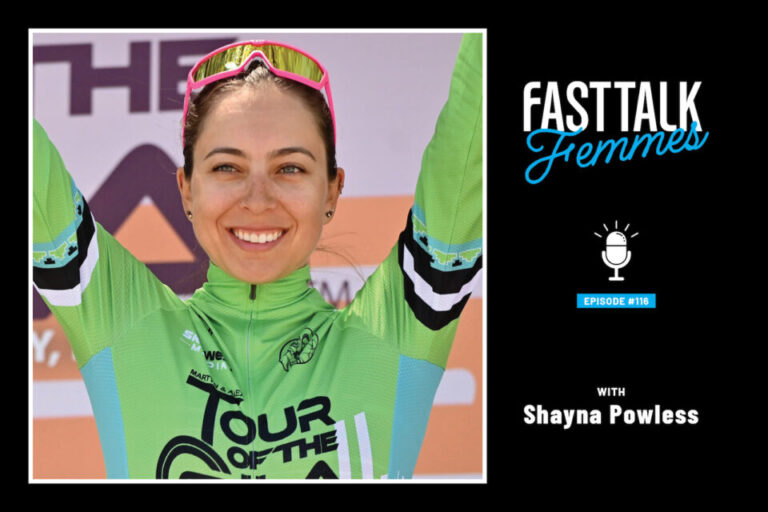Mental Fortitude – How to train your brain to handle the unpredictable nature of racing – Velo News Sept/Oct 2020

I recently had a new athlete, who had been following a training program focused mostly on endurance riding. In her first race of the year, a stage race, she crushed it in the time trial but struggled in the road race. She simply lacked the mental confidence to follow the intense attacks being thrown at her. Training is the opportunity to train the physical attributes to meet the high intensity, unpredictable demands of racing, but also to improve your mental conditioning and confidence.
Training For Unpredictable
The biggest difference between training and racing is the unpredictable nature of racing and the fact that other people are in control of dosing out the intensity. Successful racers build unpredictability into their training to ensure their mind and body are conditioned for the unpredictable nature of racing.
Lea Davison, member of the Twenty20 Professional Cycling team, and a two-time Olympic mountain biker and currentOlympic long team member for the 2021 Olympics, simulates the unpredictability of racing using motor-pacing workouts. During these sessions, her coach cues her with a horn to sprint around the motor, or spontaneously speeds up to mimic sudden, unexpected attacks. Rather than panic at the shock of the sudden intensity, Lea trains the ability to mentally stay calm and composed, focusing on what she needs to physically do to meet the challenge. This experience develops confidence and mental strength that she can lean on in similar race situations. This experience and confidence helps reduce stress and anxiety during the race, saving energy that can be applied to the pedals.
If you don’t have the option to motor-pace, there are other ways to simulate the unpredictability of racing in your training. One way is changing the ratio of interval work to rest. During the preparation phase of training we control the recovery to work time based on the level of intensity, to ensure quality work is completed and recovery mechanisms trained. For example, a Vo2 max effort has equal rest to work time, whereas a threshold interval has 50% rest. However, as we start fine-tuning for the race season, these work to rest ratios can be manipulated to better simulate unpredictability.
Fast-paced group training rides are another great training tool, mimicking race intensity and unpredictability. But if these rides are not available to you during the pandemic, ZWIFT is a great substitute. Lea has become a big fan of ZWIFT races because they mimic real-life race conditions, allowing her to mentally and physically sharpen the pointy end of her race fitness.

Making the Unknowns Known
Training is your opportunity to rehearse all aspects of performance, and to make as many of the unknowns, known.
Katerina Nash, member of the Clif Pro Team, a five-time Olympian and World Cup Mountain and Cyclocross Pro, loves racing in bad conditions because her years of racing in mud, snow, and rain have given her the mental and physical confidence to handle whatever is thrown at her. But racing in heat was Katerina’s kryptonite. So rather than avoid those races, she started training in the heat.
By using training to put yourself in situations that you will confront in races, you learn to train your mind to contend with the physical environment and sensations. As a result you develop confidence knowing that you can successfully pedal through the discomfort.
Neilson Powless, who rides for the UCI World Tour EF Pro Cycling team, analyzes his goal races for the pivotal moments that he can capitalize on, based on his strengths. He then develops training sessions specific to the demands of these sections. For example: a 5-minute, 12% climb. Neilson does hill repeats to simulate this, so he knows exactly what to expect, mentally and physically. These intervals improve his power and allow him to develop mental strategies to contend with the physical stresses.
Get Comfortable With The Discomfort of Racing
Use training to get comfortable with the discomfort of racing. A workout is most effective when an athlete connects the dots, as to why they are doing that workout and how it helps them achieve their goals. This connection also focuses the mind on something other than the pain of the effort. For example, Lea will visualize herself on a section of the 2021 Olympic course, surrounded by key competitors, making a decisive move. Not only does this allow Lea to physically get more out of her interval session, it allows her to focus her mind away from the discomfort.
Another strategy to contend with discomfort is to laser focus the mind on an action ‒ pedal stroke, rhythm, posture, breathing, staying relaxed in the upper body. Lea uses hard intervals to create the same focus she will have in a race situation. “I chase feelings, not numbers. I don’t look at data during races, so I don’t solely focus on it during training.” For Lea, the training data is just one piece of the puzzle. When you train your mind to focus on actions, you automatically lean on the same strategy in high-intensity race situations.
Training the body will get you far, but mental preparation will take your riding to the next level.







